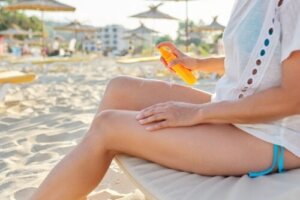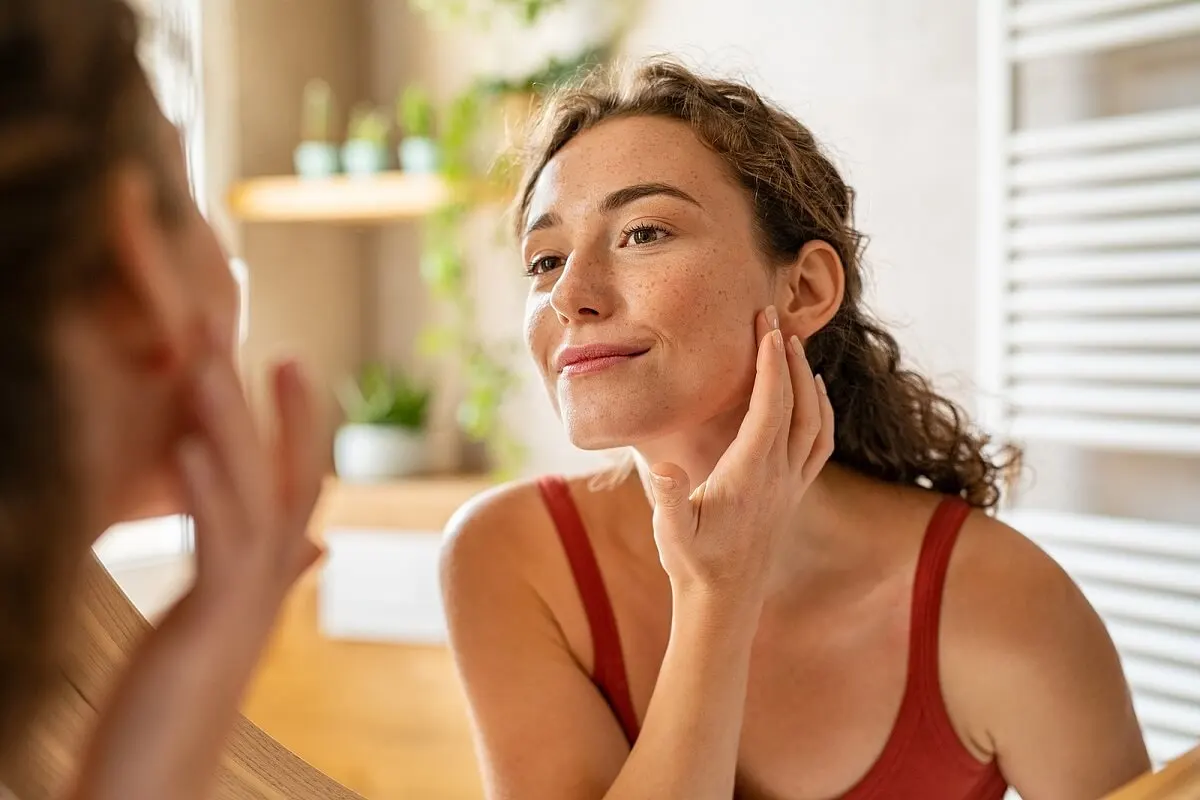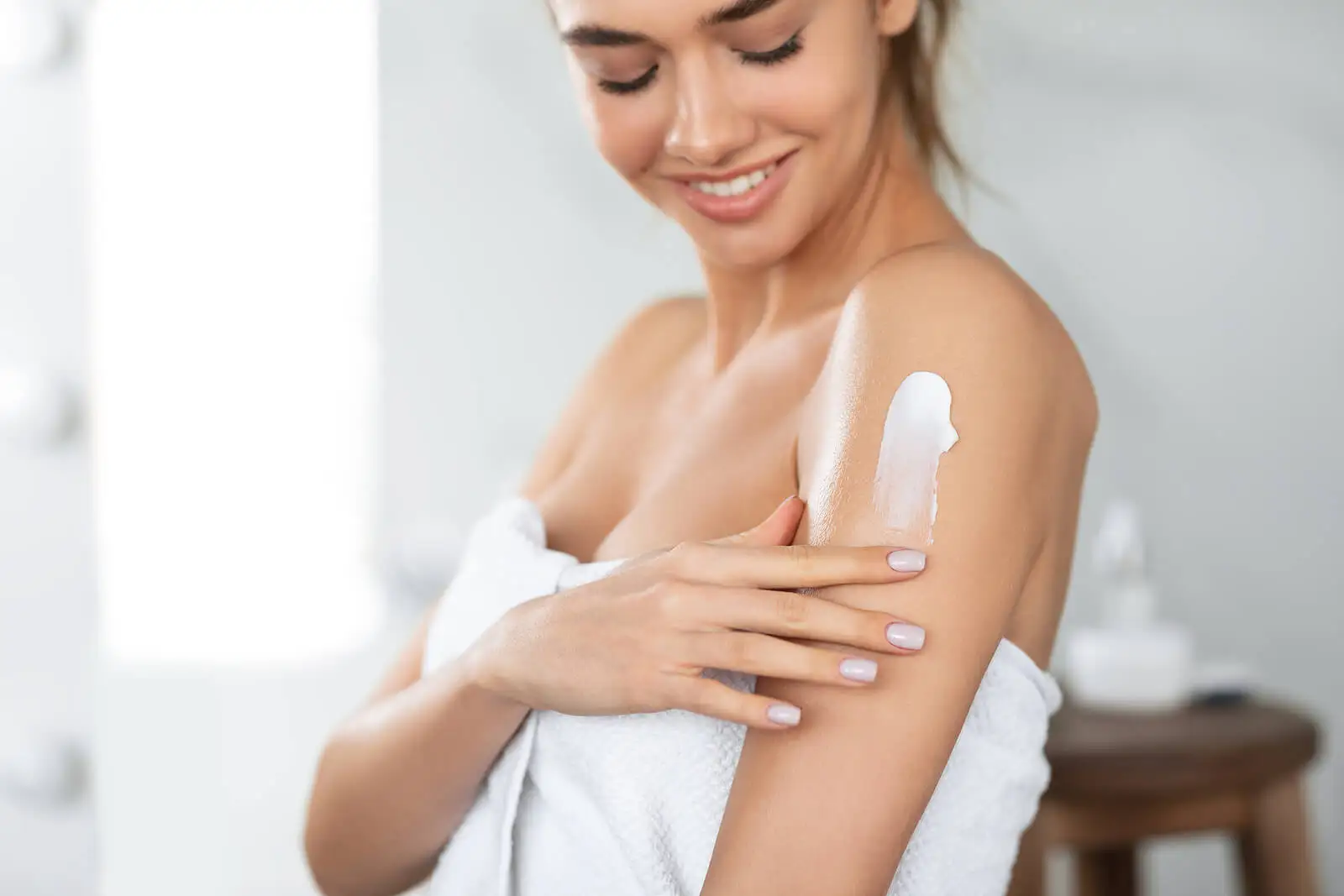Post-Holiday Skin Syndrome: What Are the Effects?


Reviewed and approved by the nurse Leidy Mora Molina
Post-holiday skin syndrome is a condition that can cause a number of negative effects on the complexion after the summer. The sun, as well as a reduction in routine care during the vacations, can cause some degree of skin deterioration.
It’s quite normal for the summer vacation period to bring with it several changes in lifestyle. In addition to more sunbathing, there’s also usually carelessness in eating and drinking, frequent use of swimming pools, and other factors. All this gives rise to post-holiday syndrome on the skin.
Post-holiday syndrome is sometimes referred to in general to refer to the emotional state of resistance during the return to work after vacation. However, the skin will have also suffered during this period and may require special care.
What is post-holiday skin syndrome?

Post-holiday syndrome on the skin is a state of deterioration that takes place after the summer vacations. During this stage, there’s more exposure to the sun, more frequent visits to the beach and swimming pools, more friction with the sand and less care in sleeping and eating.
All this together causes a series of effects on the skin. The skin is usually more damaged than at other times of the year. In general, it looks drier, duller, rougher and, many times, has spots or acne.
One of the aspects that most influences this is the lack of preventive measures during the summer. It isn’t uncommon for people to arrive home late and forget to remove their makeup. Or for them not to apply sunscreen as regularly as they should. Or, perhaps, a failure to reduce chlorine damage with appropriate measures.
How it affects skin health
It’s a fact that post-holiday syndrome affects skin health. The most noticeable effect is usually dryness or lack of moisture in the complexion. Extreme temperatures, UV rays, wind, and frequent contact with water or chlorine are responsible for this.
Even the mere fact of bathing more frequently causes the skin to lose moisture. Post-vacation syndrome affects all skin types. This has various manifestations, such as the following:
- Less smoothness and elasticity in the complexion
- Dull skin, without luminosity
- Tight and rough skin, sometimes flaky
- Wrinkles and expression lines are more visible
- Overpigmentation or dark spots on the skin
- Acne
There’s also invisible damage in the post-holiday syndrome. These correspond to negative processes that take place at the intra and extracellular level. Oxidative stress, inflammation, and mitochondrial and cellular toxicity increase. This is caused by UVA and infrared radiation and visible light.
Reparative treatments
The best way to counteract the effects caused by post-holiday syndrome is to resume beauty routines as soon as possible, as well as healthy habits. Skin care, together with an adequate diet and proper rest, all help the skin to recover its elasticity and luminosity. In general, the recommended actions are as follows.
Cleansing
Ideally, a slightly deeper cleansing should be carried out every day. However, it’s important not to overdo it: three minutes is enough. It’s best to use products such as the following:
- With hygroscopic action. These help retain moisture for longer. These substances include glycerin, sorbitol, and propylene glycol.
- Occlusives. These prevent water evaporation. They include petroleum jelly, lanolin, squalene, beeswax, etc.
- Chemical interaction. They also favor water retention. These include urea and alpha hydroxy acids, especially lactic acid.
Exfoliation
Exfoliation is a complement to cleansing and one of the most effective measures to overcome post-holiday syndrome. It should be done at least once a week. It’s best to use natural and gentle products, so as not to cause additional aggression to the skin.
Moisturizing

The post-holiday syndrome requires a more intense moisturizing than at other times of the year. It’s essential to apply a gentle moisturizer every day and, after this, a layer of sunscreen in the mornings. Neither one nor the other should be omitted. Don’t forget an eye cream either.
The best moisturizers for daytime use are oil-in-water emulsions. At night, the best thing to use is a product containing mineral oils, petroleum jelly, lanolin alcohol, and water. There are many items labeled “nourishing cream” that contain these elements.
Overcome post-holiday skin effects
Although the above measures are usually enough to reverse post-holiday skin effects, sometimes more is needed. This is especially the case if there are blemishes or acne, or if skin aging is perceived to be very severe.
In all these cases, it’s best to consult a dermatologist for advice on the best options available. It’s possible that a special aesthetic treatment may be required and it’s the doctor who can best provide guidance in this regard.
All cited sources were thoroughly reviewed by our team to ensure their quality, reliability, currency, and validity. The bibliography of this article was considered reliable and of academic or scientific accuracy.
- Nagore, E., Botella-Estrada, R., Requena, C., Serra-Guillén, C., Martorell, A., Hueso, L., … & Guillén, C. (2009). Perfil clínico y epidemiológico de los pacientes con melanoma cutáneo según el grado de exposición solar de la localización del melanoma. Actas Dermo-Sifiliográficas, 100(3), 205-211.
- Freer-Bustamante, E. (1999). El uso adecuado de protectores solares en Costa Rica. Revista Costarricense de Ciencias Médicas, 20(1-2), 103-111.
- Del Olmo, R. O. (2012). La piel y su síndrome post-vacacional. Acofar: revista de la distribución farmacéutica cooperativista, (519), 40-42.
This text is provided for informational purposes only and does not replace consultation with a professional. If in doubt, consult your specialist.








